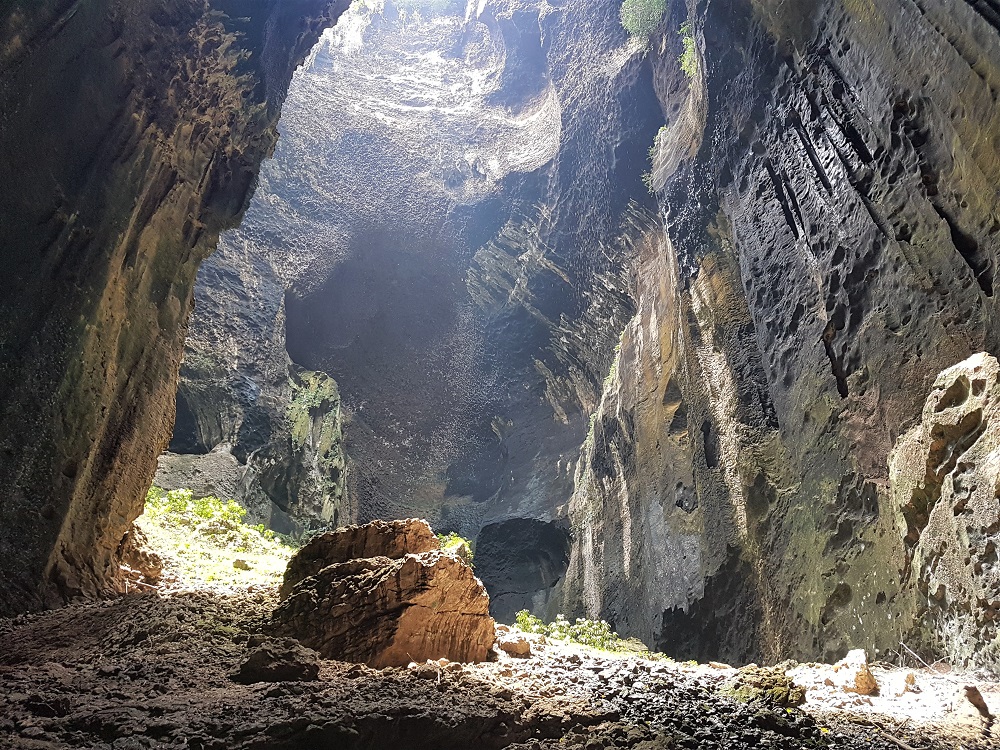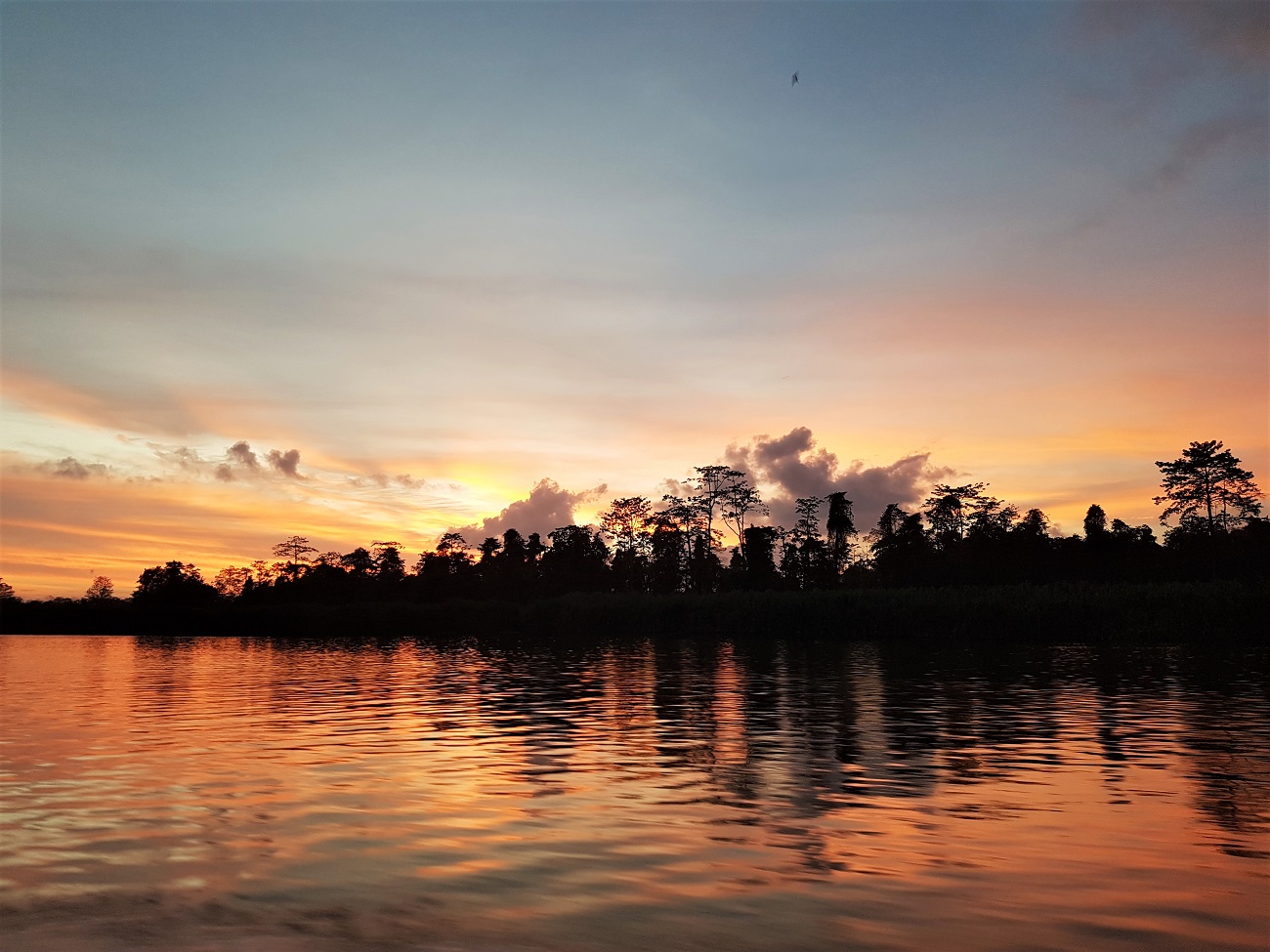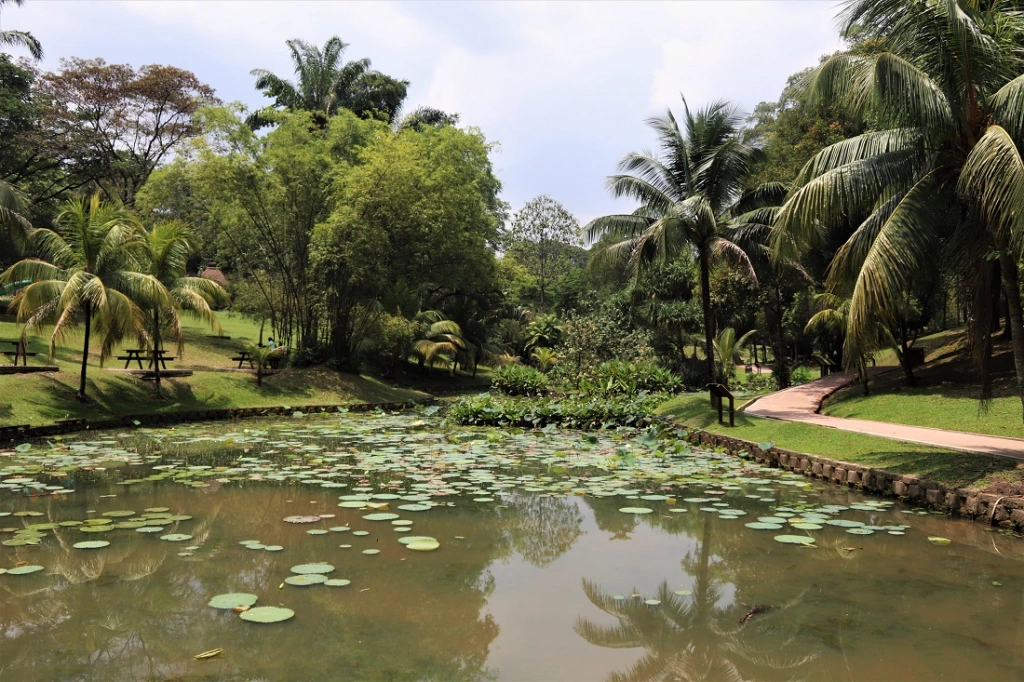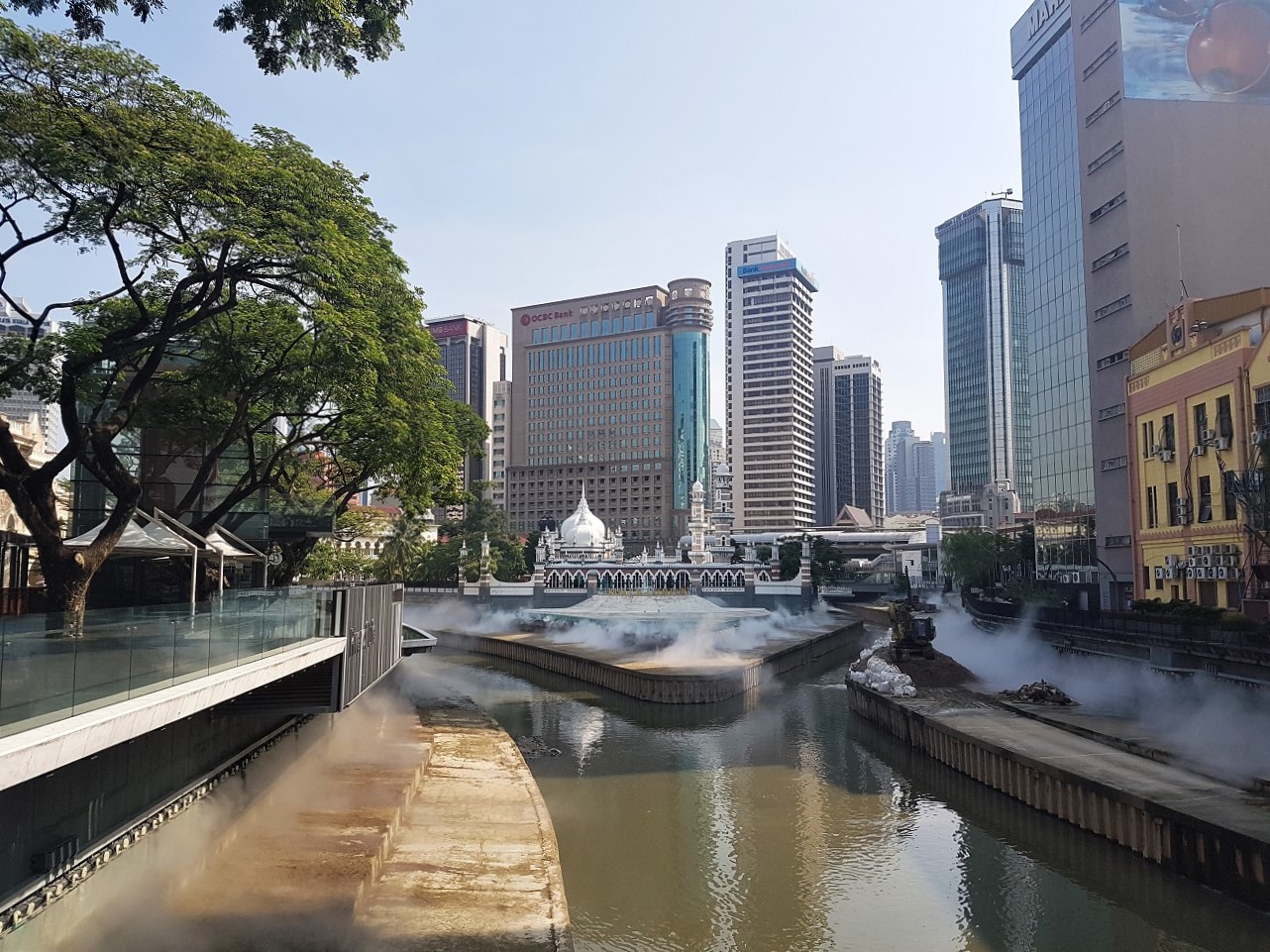Deep in the Bornean jungle lie the wondrous Gomantong Caves, a vast network of limestone caves set amid the remote Gomantong Forest Reserve.
The caves are the biggest in northern Borneo’s Sabah state and they’re renowned for the valuable swiftlet nests that line their walls.
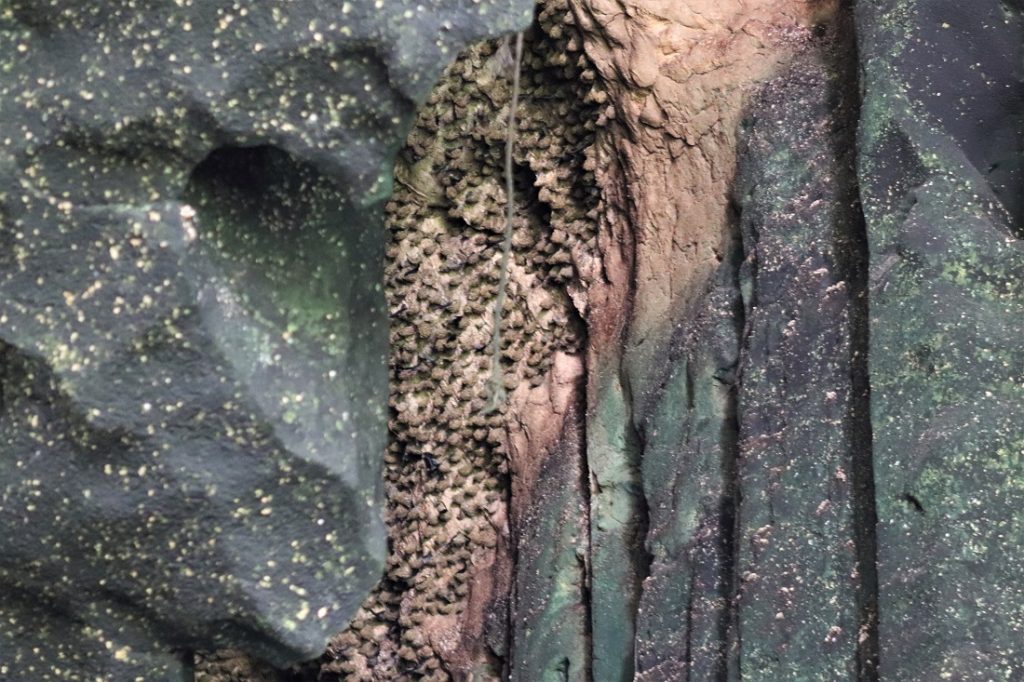
These highly sought after nests (above) are used to make the Chinese delicacy, bird’s nest soup.
Only local people with a licence can collect the nests and this collection is restricted to twice a year – from February to April, and July to September.
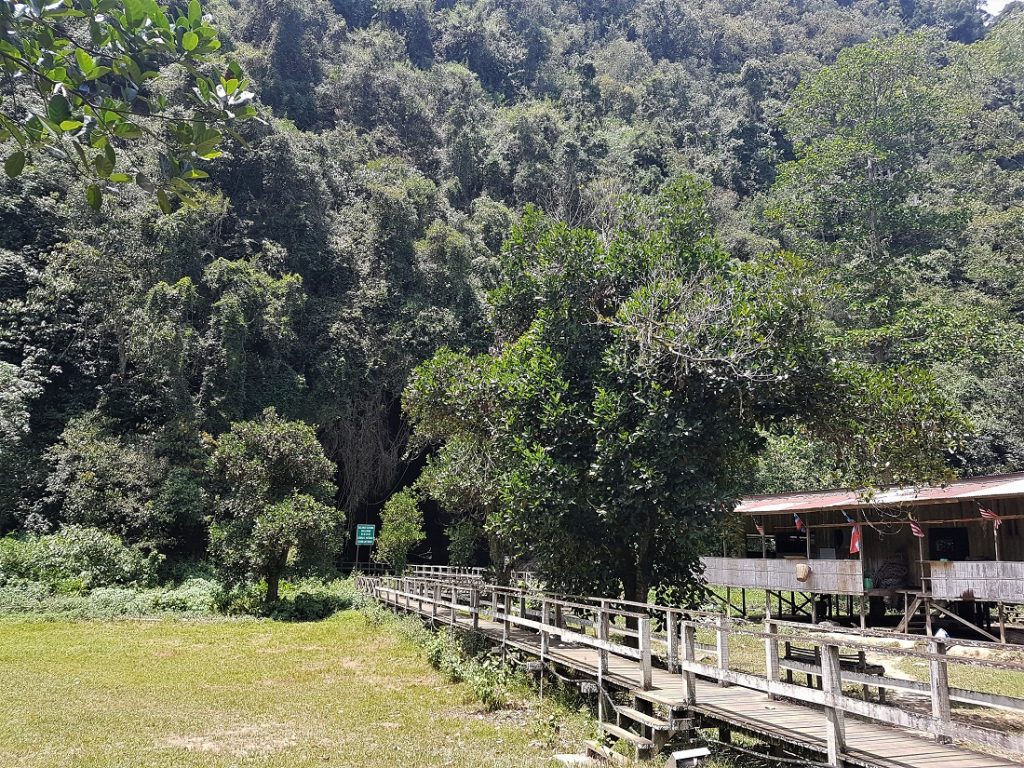
To safeguard the swiftlets and their nests, there are huts inside and outside the cave system (above), where guards protect them from poachers.
The largest chambers are Simud Hitam, known as the black cave after the black swiftlet nests that adorn its walls, and Simud Putih, known as the white cave after its white nests. Only Simud Hitam is open to visitors.

We arrived at the visitor centre and set off through the jungle via a long, rickety and very uneven boardwalk.
Along the way, we spotted a monitor lizard getting out of a stream, as well as a mother and baby orangutan not far from the caves’ entrance.
Simud Hitam is an enormously tall chamber home to thousands of the aforementioned swiftlets, along with bats, cockroaches, scorpions, venomous giant centipedes (above), non-venomous snakes and cave crabs.

Around the edge of the chamber, there’s a boardwalk to protect visitors from the enormous mound of bat and swiftlet guano that fills the cave floor (below) and gives the chamber a distinctive odour.
It’s such a unique environment that the legendary Sir David Attenborough has visited the caves a few times over the years for his BBC wildlife documentaries.
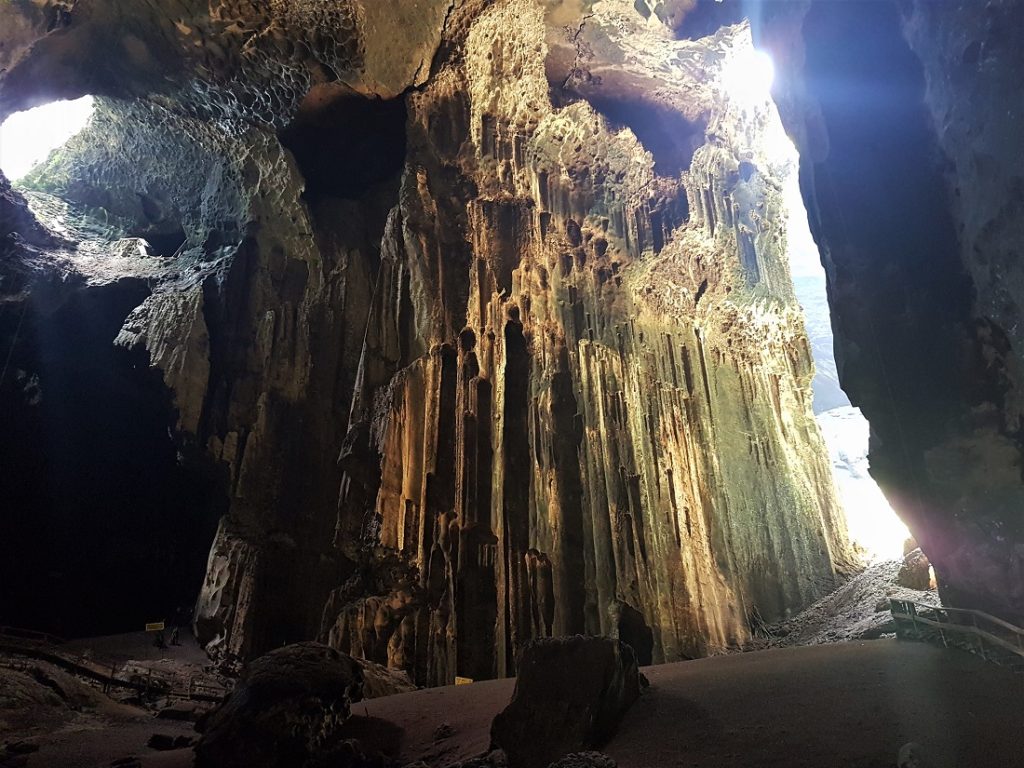
Not only is the chamber a fascinating site to explore, but it’s also very beautiful, and I was particularly taken by its stunning rock formations (above).
As I walked along the boardwalk, I was amazed by how many cockroaches there were.
They were crawling all over the place – the walls, the boardwalk, the handrail (above) and on the ubiquitous guano.
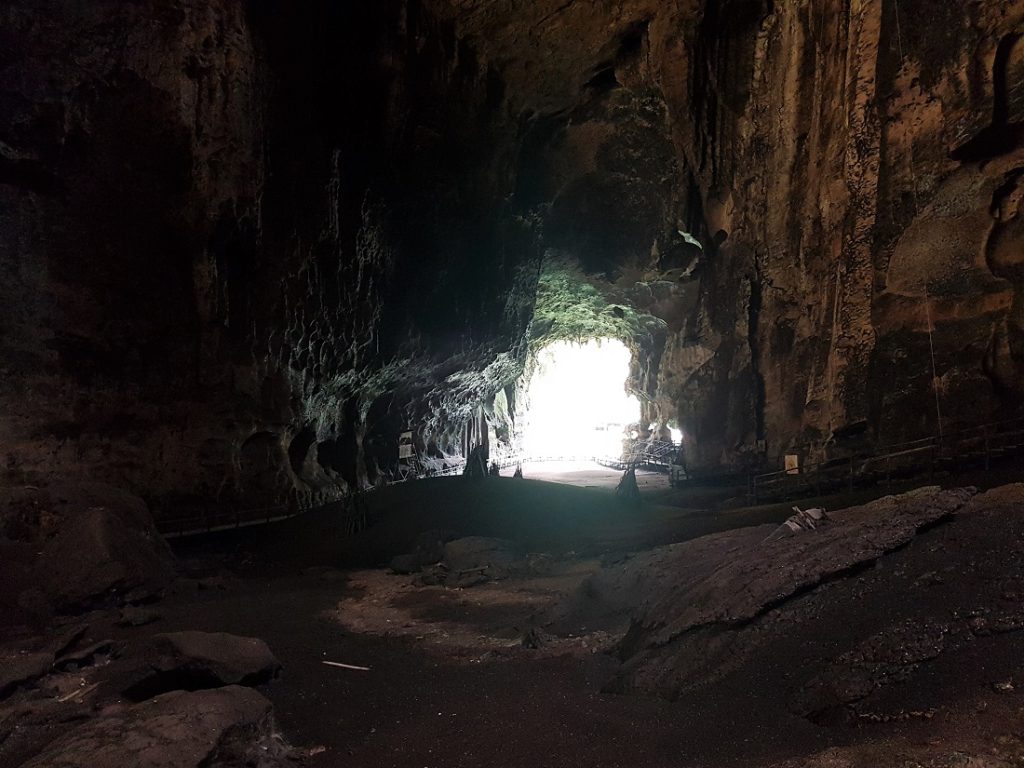
I was also intrigued by the guard’s hut in the middle of the guano pit and could only pity the poor guards inside.
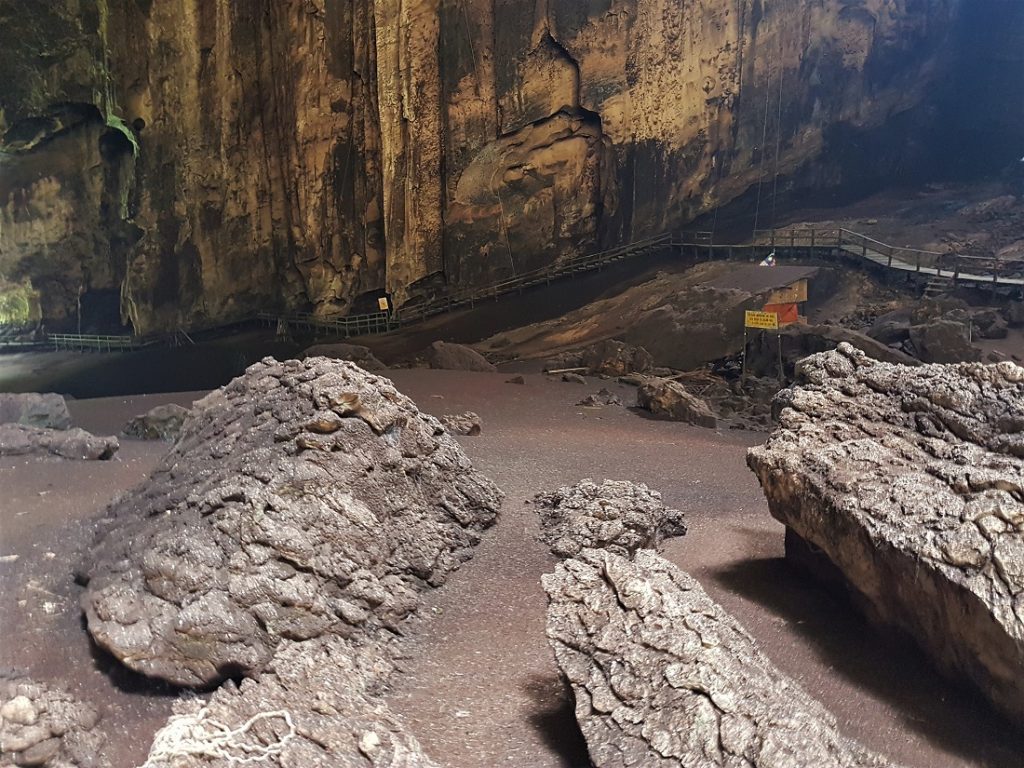
While I was perfectly happy to visit the cave and had a great time looking around the spectacular chamber, there’s no way I’d want to spend a prolonged period of time surrounded by all that guano and the creepy crawlies.
There were other perils inside the cave, too. At one point as I walked around, I felt a wet splodge on my upper arm and realised a swiftlet had relieved itself upon me.
On going outside, I went to wash the droppings off me and as I was leaving the toilet block, I looked up and saw two orangutans in the trees (below).
They were really close to us, which meant I got a really good look at their faces.
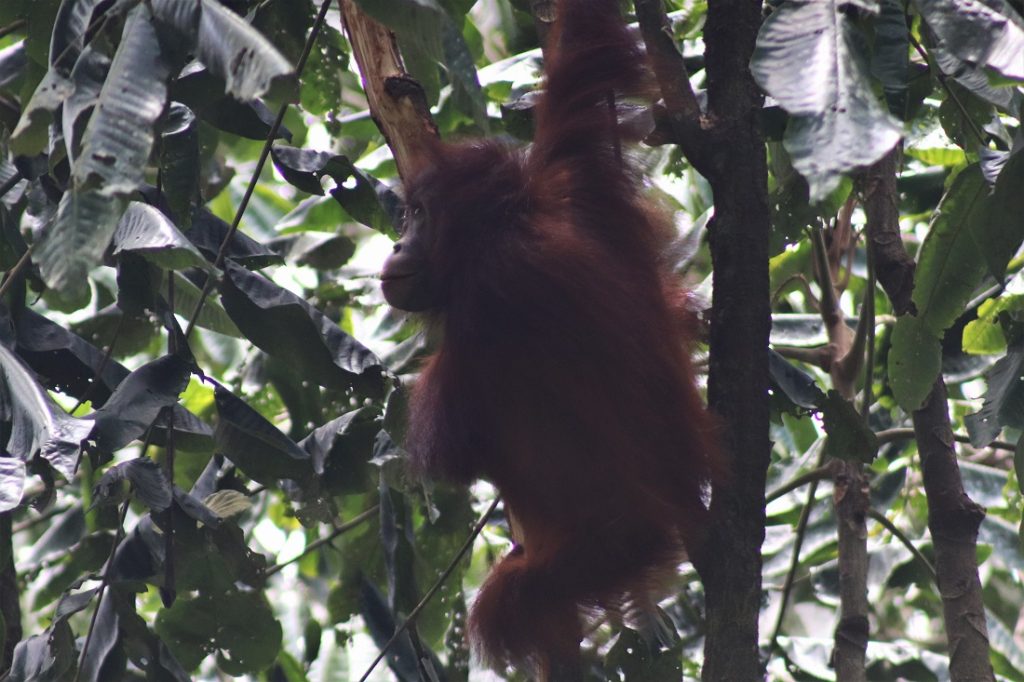
Seeing the orangutans in the wild was an unexpected treat and I felt privileged to happen upon these beautiful creatures.
We spent a little while watching the orangutans, before making our way back to the visitor centre as it was time to move on to our next stop, the Kinabatangan River.
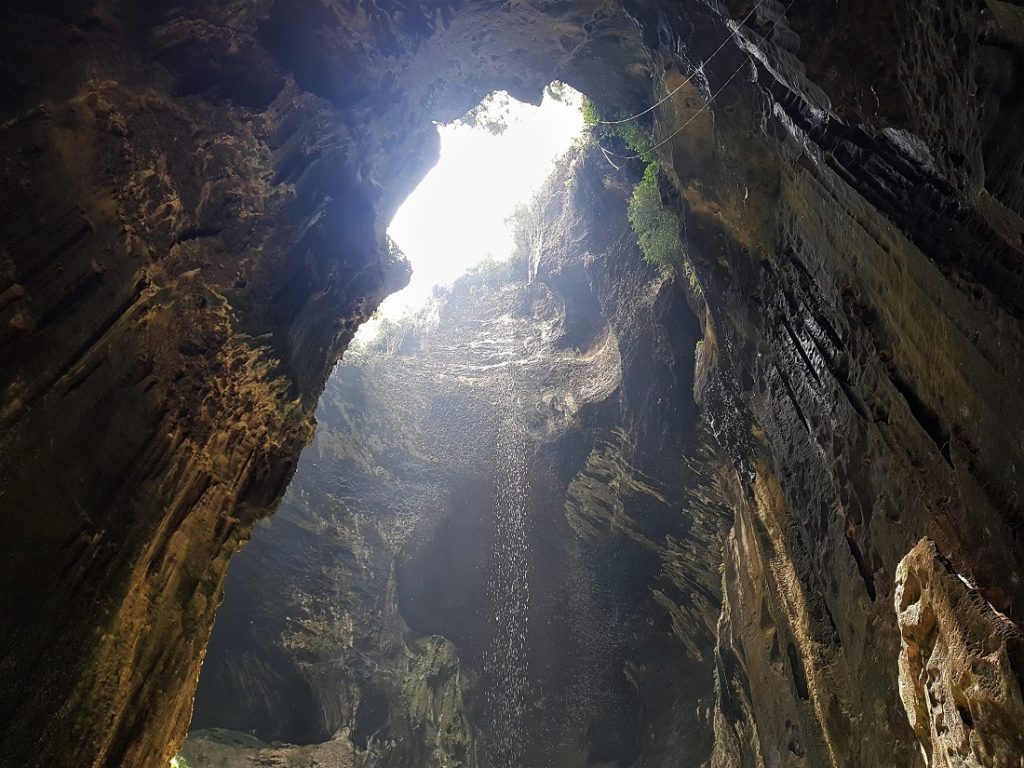
I loved our visit to the Gomantong Caves. It’s an extraordinary, otherworldly place and they’re quite unlike any other caves I’ve been to.
Not only was Simud Hitam stunningly beautiful, but the wildlife within (and outside) made it unforgettable.
Info
You’ll need to pay a small fee at the visitor centre if you want to take your camera inside the caves.

